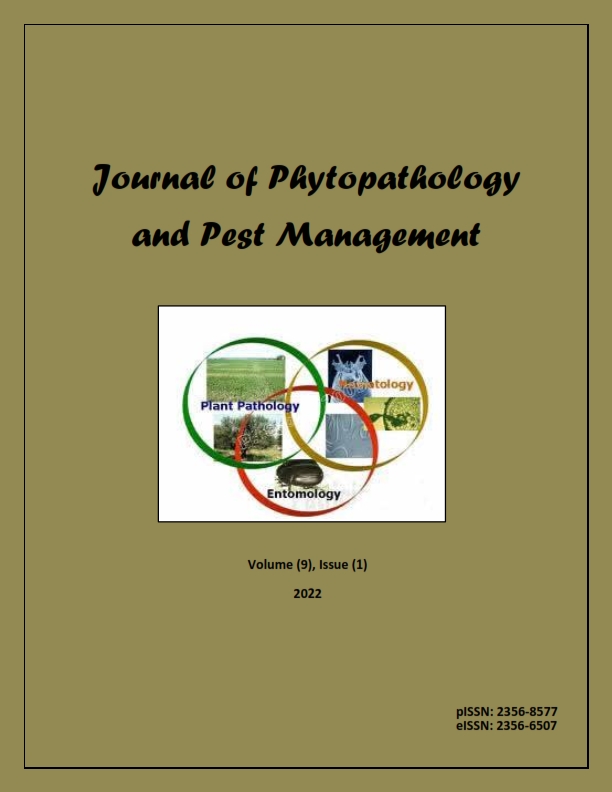Management of Phytoplasma associated with sesame (Sesamum indicum L.) in Assiut governorate, Egypt
DOI:
https://doi.org/10.5281/zenodo.10251738Schlagworte:
sesame, symptoms, Phytoplasma detection, varieties, irradiationAbstract
Phytoplasma associated with sesame can cause serious economic losses in sesame production in Assiut governorate, Upper Egypt. Various primary symptoms indicating phyllody disease were noted, including proliferation (witches’ broom), yellowing, and the transformation of capsules into flowers, resulting in a significant decrease in sesame yield. Phyllody symptomatology and incidence were studied in three sesame varieties (Giza 32, Shandawel 3, and Sohag 1). Four irradiation treatments It was irradiated using Cobalt 60 at different doses (150, 200, 250, and 300 Gy of gamma rays). Data showed that Shandawel 3 was categorized as a moderately resistant cultivar, while Sohag 1 was grouped as resistant and Gize 32 was categorized as moderately susceptible. This study also revealed that all irradiation treatments (150, 200, 250, and 300 Gy) reduced the percentage of infected rate and disease severity caused by phytoplasma. The study recommends that using resistant varieties is an efficient and sustainable approach to controlling susceptibility to phytoplasmas in sesame.
Metriken
Downloads
Veröffentlicht
Zitationsvorschlag
Ausgabe
Rubrik
Lizenz
Copyright (c) 2022 Journal of Phytopathology and Disease Management

Dieses Werk steht unter der Lizenz Creative Commons Namensnennung - Nicht-kommerziell 4.0 International.
Click here for more information on Licensing policy

.png)




